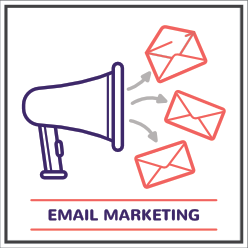Permission and B2B spam
Two of the very first posts I wrote on the blog were about permission (part 1, part 2). Re-reading those posts is interesting. Experience has taught me that recipients are much more forgiving of implicit opt-in than that post implies.
The chance in recipient expectations doesn’t mean, however, that permission isn’t important or required. In fact, The Verge reported on a chatbot that will waste the time of spammers. Users who are fed up with spam can forward their message to Re:Scam and bots will answer the mail.
I cannot tell you how tempted I am to forward all those “Hey, just give me 10 minutes of your time…” emails I get from B2B spammers. I know, those are actually bots, but there is lovely symmetry in bots bothering one another and leaving us humans out of it.
Speaking of those annoying emails, I tweeted about one (with horrible English…) last week. I tagged the company in question and they asked for an example. After I sent it, they did nothing, and I continued to get mail. Because of course I did.
These types of messages are exactly why permission is so critical for controlling spam. Way more companies can buy my email address and add me to their spam automation software than I can opt-out of in any reasonable time frame. My inbox, particularly my business inbox, is where I do business. It’s where I talk with clients, potential clients, customers and, yes, even vendors. But every unsolicited email wastes my time.
It’s not even that the mail is simply unwanted. I get mail I don’t want regularly. Collecting white papers for my library, RSVPing to events, joining webinars all result in me getting added to companies’ mailing lists. That’s fair, I gave them an email address I’ll unsubscribe.
The B2B companies who buy my address are different. They’re spamming and they understand that. The vendors who sell the automation filters tell their customers how to avoid spam filters. Spammers are told to use different domains for the unsolicited mail and their opt-in mail to avoid blocking. The software plugs into Google and G Suite account because very few companies will block Google IPs.
I’ve had many of these companies attempt to pay me to fix their delivery problems. But, in this case there’s nothing to fix. Yes, your mail is being blocked. No, I can’t help. There is nothing I can say to a filtering company or ISP or company to make them list that block. The mail is unwanted and it’s unsolicited.
The way to get mail unblocked is to demonstrate the mail is wanted. If you can’t do that, well, the filters are working as intended.
